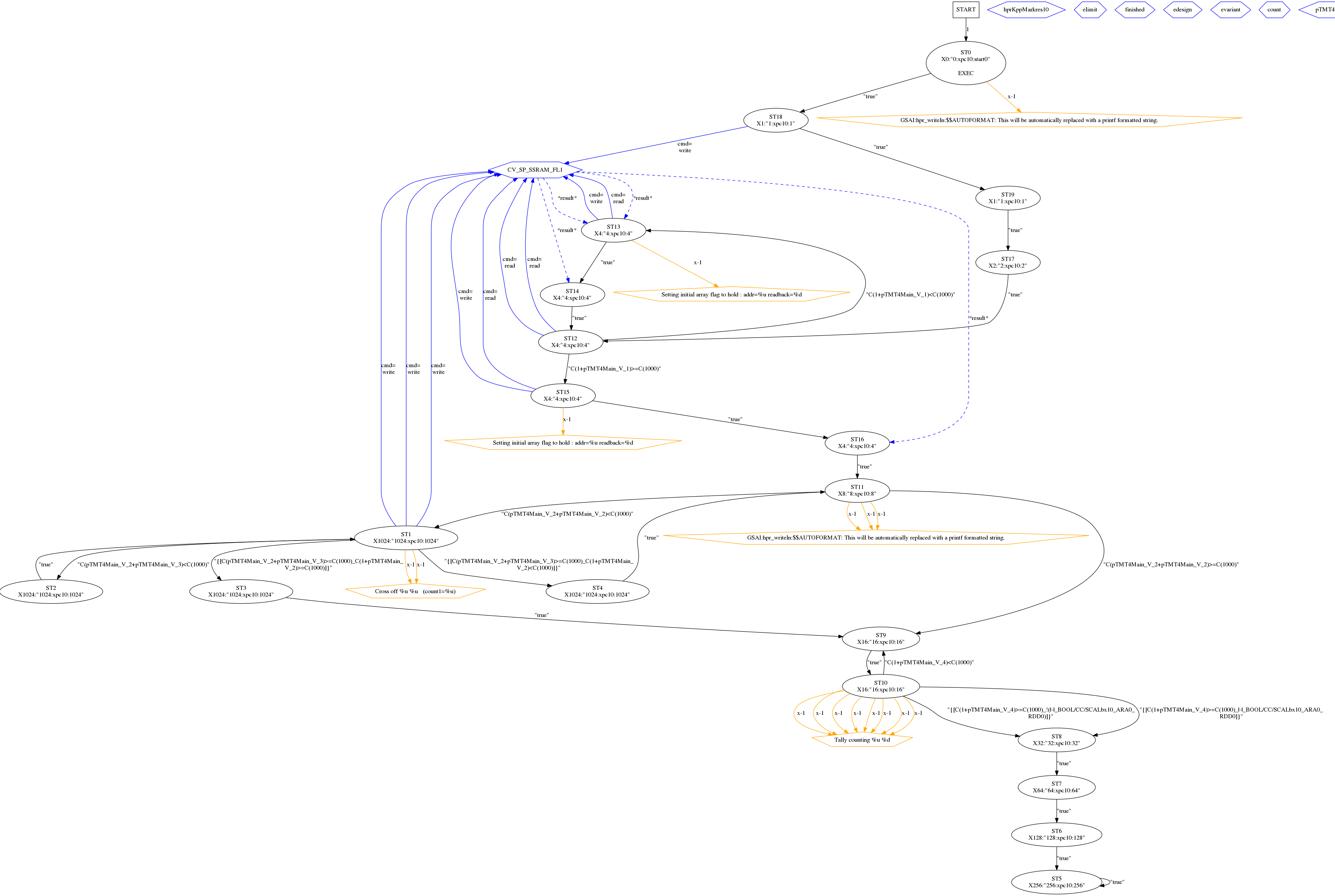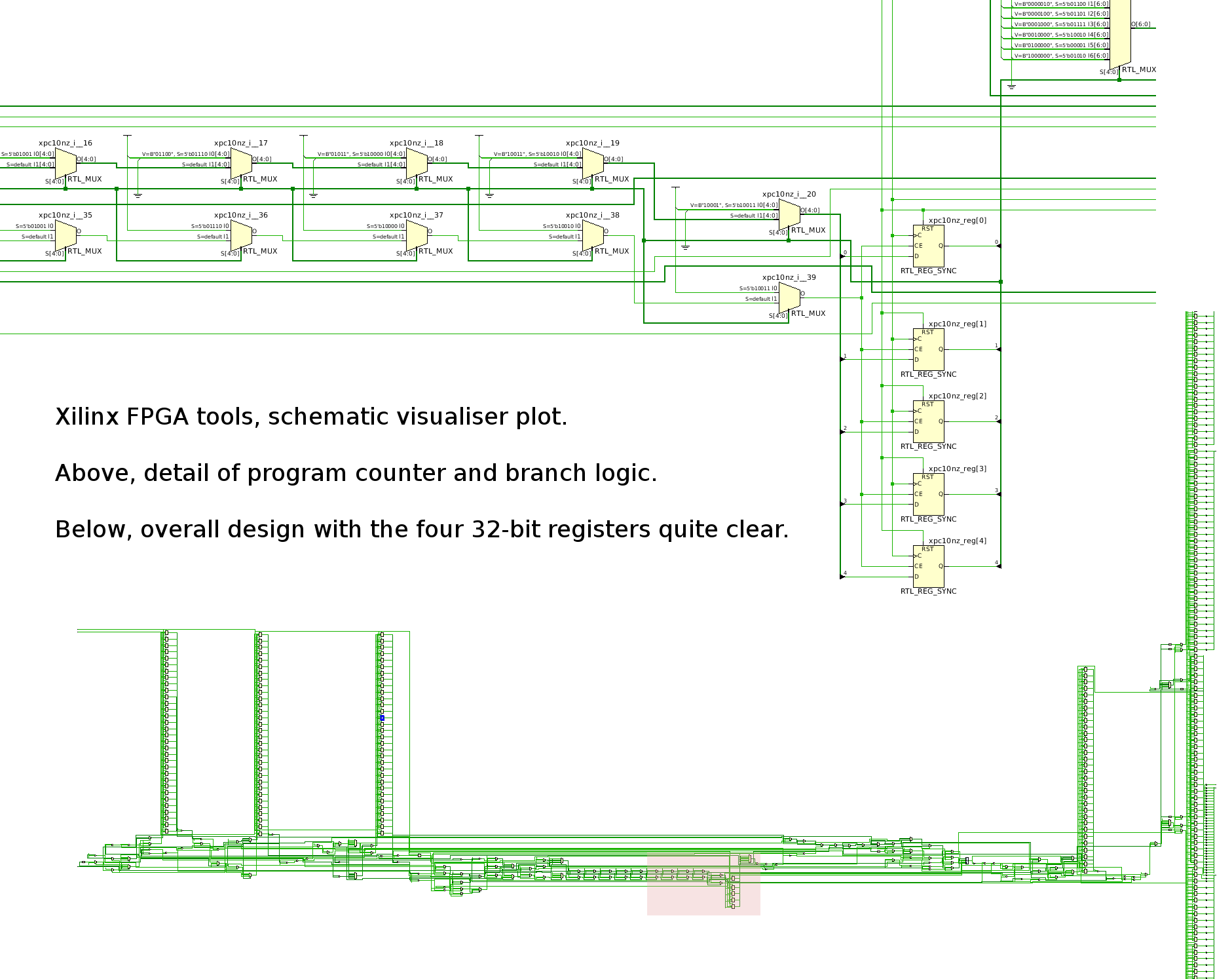
class primesya
{
static int limit = 1 * 1000;
static bool [] PA = new bool[limit];
// This input port, vol, was added to make some input data volatile.
[Kiwi.OutputWordPort(31, 0)][Kiwi.OutputName("count")] static uint count = 0;
static int count1 = 0;
[Kiwi.OutputWordPort(31, 0)][Kiwi.OutputName("elimit")] static int elimit = 0; // The main parameter (abscissa).
// The evariant_master is also edited by a sed script that runs an individual experiment.
// For fair comparison with mono native this needs to be a compile time constant.
const int evariant_master = 0;
[Kiwi.OutputWordPort(31, 0)][Kiwi.OutputName("evariant")] static int evariant_output = evariant_master;
[Kiwi.HardwareEntryPoint()]
public static void Main()
{ bool kpp = true;
elimit = limit;
Kiwi.KppMark("START", "INITIALISE"); // Waypoint
Console.WriteLine("Primes Up To " + limit);
// Clear array
count1 = 2; count = 0; // RESET VALUE FAILED AT ONE POINT: HENCE NEED THIS LINE
for (int woz = 0; woz < limit; woz++)
{ PA[woz] = true;
Console.WriteLine("Setting initial array flag to hold : addr={0} readback={1}", woz, PA[woz]); // Read back.
}
Kiwi.KppMark("wp2", "CROSSOFF"); // Waypoint
int i, j;
for (i=2;i<limit; i++) // Can our predictor cope with the standard optimisations?
{ // Cross off the multiples - optimise by skipping where the base is already crossed off.
if (evariant_master > 0)
{
bool pp = PA[i];
Console.WriteLine(" tnow={2}: scanning up for live factor {0} = {1} ", i, pp, Kiwi.tnow);
if (!pp) continue;
count1 += 1;
}
// Can further optimise by commencing the cross-off at the factor squared.
j= (evariant_master > 1) ? i*i : i+i;
if (j >= limit)
{ Console.WriteLine("Skip out on square");
break;
}
for (; j<limit; j+=i)
{ Console.WriteLine("Cross off {0} {1} (count1={2})", i, j, count1);
Kiwi.Pause(); PA[j] = false;
}
}
Kiwi.KppMark("wp3", "COUNTING"); // Waypoint
Console.WriteLine("Now counting");
// Count how many there were and store them consecutively in the output array.
for (int w = 0; w < limit; w++)
{ if (PA[w]) count += 1;
Console.WriteLine("Tally counting {0} {1}", w, count);
}
Console.WriteLine("There are {0} primes below the natural number {1}.", count, limit);
}
}

Black arcs indicate state trajectories. Blue arcs indicate operations on structural resources such as ALUs and RAMs.

Misc notes on Classical HLS:
| 39: (C) 2008-18, DJ Greaves, University of Cambridge, Computer Laboratory. |